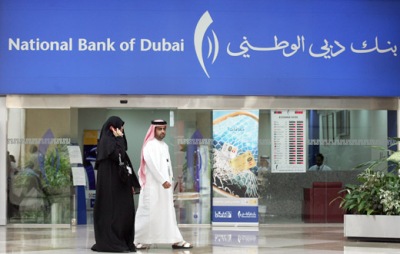Did Islamic Banks in the Gulf Do Better Than Conventional Ones in the Crisis?:
.The IMF’s latest regional economic outlook for the Middle East compares the performance of Islamic banks in the countries of the Gulf Cooperation Council (GCC) with conventional ones during the global financial crisis.
Islamic banks were less affected during the initial phase of the crisis, reflecting a stronger first-round impact on conventional banks through mark-to-market valuations on securities in 2008. But, in 2009, data for the first half of the year indicate somewhat larger declines in profitability for Islamic banks, revealing the second-round effect of the crisis on the real economy, especially real estate.
Going forward, Islamic banks overall are better poised to withstand additional stress, according to the IMF analysis.
Portfolio risk
Islamic banks have grown substantially in recent years, with their assets currently estimated at close to $850 billion. Overall, the risk profile of Islamic banks is similar to conventional banks in that the risk profile of Shariah-compliant contracts is largely similar to that in conventional contracts, and credit risk is the main risk for both types of banks.
Islamic banks are not permitted to have any direct exposure to financial derivatives or conventional financial institutions’ securities—which were hit most during the global crisis (photo: Karim Sahib/AFP/Getty Images)
Unlike conventional banks, however, Islamic banks are not permitted to have any direct exposure to financial derivatives or conventional financial institutions’ securities—which were hit most during the global crisis.
An analysis of the top 50 banks in the GCC indicates that conventional banks also had this advantage going into the crisis—direct exposure to equity investments (and derivatives in the case of conventional banks) were very low in both types of banks (a mere 1 percent of total assets in conventional banks and 2 percent for Islamic banks in 2008).
Risk concentration
The main difference in risk exposures appears to be related to concentration risk of Islamic banks in certain countries. While Islamic banks’ exposure to the risky real estate and construction sectors is lower in Saudi Arabia, Kuwait, and Bahrain, it is significantly higher than the system’s average in the United Arab Emirates (U.A.E.) and Qatar.
While Islamic banks were less affected by the initial impact of the global crisis, profitability fell substantially across both types of banks in 2008 and the first half of 2009, with declines somewhat larger for Islamic banks during the second phase. The weaker performance of Islamic banks in 2009 was largely driven by the U.A.E. and Qatar, where they had a considerably higher exposure to the real estate and construction sectors. A more complete view of the impact of the crisis on the two groups of banks will become available next year.
Which group of banks is better positioned?
With larger capital and liquidity buffers, Islamic banks are better positioned to withstand adverse market or credit shocks.
On average, Islamic banks’ capital adequacy ratio in the GCC is higher than that for conventional banks (except in the U.A.E.). The risk-sharing aspect of Shariah-compliant contracts adds to this buffer as banks are able to pass on losses to investors.
Join over 320,000 readers. Get a free weekly update via email here.
Related posts:
New Neuroscience Reveals 4 Rituals That Will Make You Happy
New Harvard Research Reveals A Fun Way To Be More Successful
How To Get People To Like You: 7 Ways From An FBI Behavior Expert





